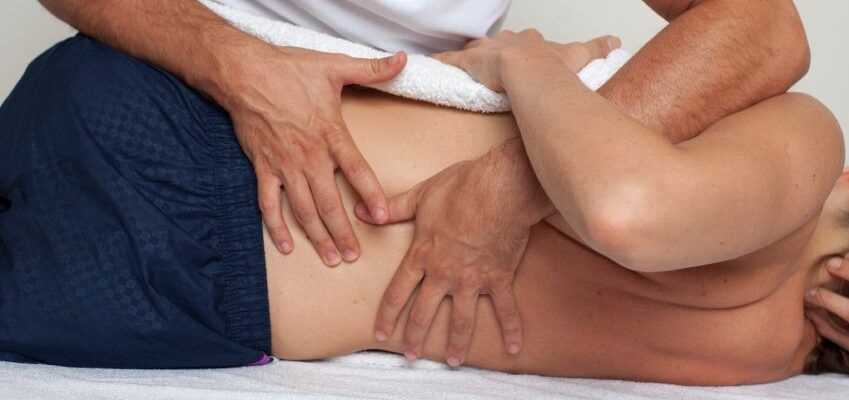Written according to the highest scientific standards and checked by experts
Scheuermann's disease is a hereditary developmental disorder of the spine. This does not necessarily have to go hand in hand with reduced performance. How exactly Scheuermann's disease develops is still unknown. But physiotherapy exercises help to correct the incorrect posture – an operation is rarely necessary.
-
- Scheuermann's disease can be treated well with physiotherapy and exercise.
- © iStock.com/AdamGregor
Scheuermann's disease is a genetic developmental disorder of the spine. It is mainly found in adolescents and primarily affects the male sex.
This is how Scheuermann's disease expresses itself
In Scheuermann's disease (Scheuermann's disease), the development of the spine is disturbed.
Depending on the location of the changes, the disease leads
- on the thoracic spine to form a rounded back
- on the lumbar spine to the flat back
However, only half of those affected who have changes in the spine also feel discomfort. The severity of the radiological symptoms does not allow a prognosis for the later course of the disease. The Scheuermann diagnosis is therefore not automatically synonymous with impaired physical performance or illness.
Pain is more common in the variant of Scheuermann's disease, which affects the lumbar spine (lumbar spine) than in the thoracic spine (thoracic spine).
Weak back muscles make complaints more likely. Adolescents who complain of back pain even with low stress should consult a doctor to clarify the cause more precisely.
Unknown causes of Scheuermann's disease
The exact causes for the development of Scheuermann's disease are still unknown. Because the cartilaginous cover plates of the vertebral bodies are not very resilient, intervertebral disc tissue penetrates through them into the vertebral bodies, so that they deform in a wedge shape over time under further stress. The growth zones in the anterior region of the vertebral bodies are particularly affected. As the child grows up, the spine may curve forward (kyphosis).
Diagnosis by Scheuermann
The diagnosis of Scheuermann's disease is made on the basis of X-rays, in which the changes typical of this disease can be demonstrated.
Scheuermann's disease is easily treatable
With Scheuermann's disease, the back muscles need to be strengthened. The prognosis is generally good. Treatment should be started early in order to avoid back pain due to a highly advanced spine misalignment. In the complaint stage it is therefore important to avoid excessive stress on the spine.
In the case of milder forms of illness, it makes sense to strengthen the back muscles through regular exercise or sport. If you have a pronounced hunchback, targeted, physiotherapeutic muscle training is also recommended to correct incorrect posture. Only in very rare and severe cases is an operation necessary today. Even wearing a corset is only necessary in exceptional cases.
With the end of growth and entry into adulthood, the disease usually heals automatically. The changes that have already occurred remain, however.
Scheuermann's disease cannot be prevented
It is not possible to prevent Scheuermann's disease. A back-conscious lifestyle is certainly good advice if you have a tendency to this disease: Children should learn good posture and a feeling for their back at an early age. Regular exercise, a straight seat and a normal body weight make sense and can help prevent Scheuermann's disease.



